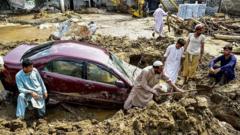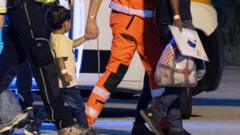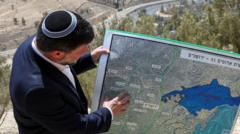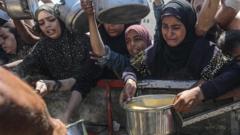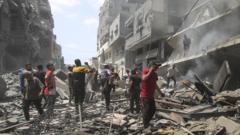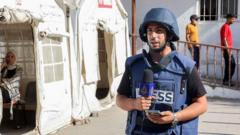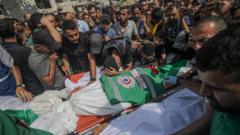Tensions rise as the Iranian government faces mounting civilian unrest following multiple air assaults.
**Escalating Crisis: Tehran Faces Uncertain Days After Strikes**

**Escalating Crisis: Tehran Faces Uncertain Days After Strikes**
Amid fears and confusion, Tehran residents grapple with the aftermath of Israeli airstrikes targeting military and nuclear sites.
Residents of Tehran awoke to chaos and destruction after a night of harrowing explosions that reverberated throughout the city. Israeli airstrikes vividly targeted significant military and nuclear facilities, causing anxiety among the population. Long queues formed at gas stations and grocery stores as citizens braced themselves for the turbulent days ahead.
The Israeli bombardments reportedly hit the Natanz nuclear facility, the Parchin military base, and several other military sites across Iran, leading to a significant number of civilian casualties, including children. While the government has refrained from providing a definitive count of the dead and injured, witnesses and local media have documented extensive damage in both upper and working-class neighborhoods of Tehran, as well as military infrastructures.
Israeli officials had previously warned of imminent strikes on nuclear sites, which the Iranian government had dismissed as unfounded propaganda aimed at coercing Iran into a weaker position during ongoing nuclear negotiations with the U.S. In contrast to the government's calls for calm, there was a conspicuous absence of any public safety measures or guidance for civilians on how to protect themselves amid further possible assaults.
The somber mood in the streets reflects a populace staring into an uncertain future, left to navigate the fallout from a conflict that is escalating before their eyes. Communities are coming together in solidarity, but the fear and confusion from the strikes have left an indelible mark on the residents of Tehran.
The Israeli bombardments reportedly hit the Natanz nuclear facility, the Parchin military base, and several other military sites across Iran, leading to a significant number of civilian casualties, including children. While the government has refrained from providing a definitive count of the dead and injured, witnesses and local media have documented extensive damage in both upper and working-class neighborhoods of Tehran, as well as military infrastructures.
Israeli officials had previously warned of imminent strikes on nuclear sites, which the Iranian government had dismissed as unfounded propaganda aimed at coercing Iran into a weaker position during ongoing nuclear negotiations with the U.S. In contrast to the government's calls for calm, there was a conspicuous absence of any public safety measures or guidance for civilians on how to protect themselves amid further possible assaults.
The somber mood in the streets reflects a populace staring into an uncertain future, left to navigate the fallout from a conflict that is escalating before their eyes. Communities are coming together in solidarity, but the fear and confusion from the strikes have left an indelible mark on the residents of Tehran.


